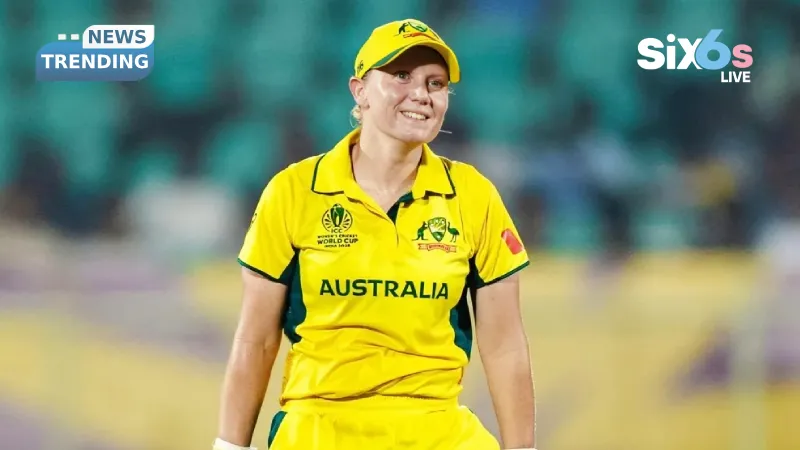Cricket is a game of irony, and few are more ironic than to watch a team sitting at the edge of greatness with their best player (Alyssa Healy) sidelined by injury. Alyssa Healy has been on fire for the past four games of the ICC Women’s Cricket World Cup 2025, racking up 294 runs with back-to-back centuries against India and Bangladesh. And yet she won’t play for Australia on Wednesday, October 22, against England because of a minor calf strain. It would be almost unfair to the Australians to lose one of their greatest batsmen so early in the tournament with only the semifinals ahead and a spot in the final already assured.
Tahlia McGrath: Leadership Under the Microscope
Step into Healy’s position and lead your Australian team against England, and that presents you with many opportunities but also a huge amount of pressure. McGrath has provided a lot of value for the team in this World Cup through her all-around abilities; however, there are some challenges she will be facing in taking over as captain from Healy, who has so much experience and strategy at his disposal. A key difference between being a leader and a player is the ability to time how aggressive you want to play; also, know when to rotate the strike, and manage the pressure of chasing a target.
The Healy Batting Void: Tactical and Statistical Implications
Healy’s 142 against India represented the greatest chase in women’s ODI history and is an example of Healy’s style, which is a combination of both aggressive and calculated play as well as endurance. Her 113 against Bangladesh provided another example of Healy being able to score at an elite level regardless of conditions. When Australia loses Healy during a tournament, they lose more than just runs – they also lose a significant mental edge with a proven number one batsman at the top of the lineup. Therefore, England will attempt to put pressure on the new openers immediately so that the entire Australian batting unit must adjust its strategy for batting depth.
Momentum vs Risk: Australia’s Strategic Dilemma
Australia is faced with a traditional balancing act: should it protect Healy for the semi-final or risk her coming back too early? Shelley Nitschke’s management method in the build-up to the tournament is similar to that in the past, where the team has managed the completion of the heavier players on the basis that the World Cup victory is more a marathon event than a sprint. This tactically raises the opportunity for other batters such as Beth Mooney or Rachael Haynes to show their mettle, but the pressure will be increased in a match against England, a team that can take advantage of the slightest errors on the part of its opponents.
England’s Window: Exploiting the Missing Spark
The calf strain suffered by Alyssa Healy is bigger than just a physical setback; it’s a new storyline with strategic implications. Australia is still a favorite to win the game, but England may be able to take advantage of a chance for their batsmen to show up in a big game. The match will likely become a test of McGrath’s leadership abilities and whether Australia can quickly regain its batting momentum after losing its main player. If they are successful during this time, they prove that they can overcome adversity; however, if not, England may have the opportunity to alter the momentum going into the semi-finals. Timing is everything in both sports and life, and this is one test of timing that Australia has no chance to practice for.
Key Takeaway:
Healy’s absence isn’t just about missing runs; it’s a litmus test of Australia’s adaptability under pressure.
Stay updated on the latest cricket news and exciting updates at Six6slive. Dive into our in-depth articles and analyses to connect with the action today!
